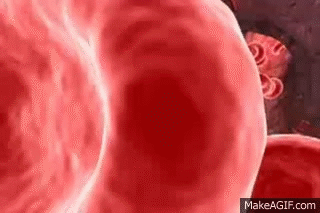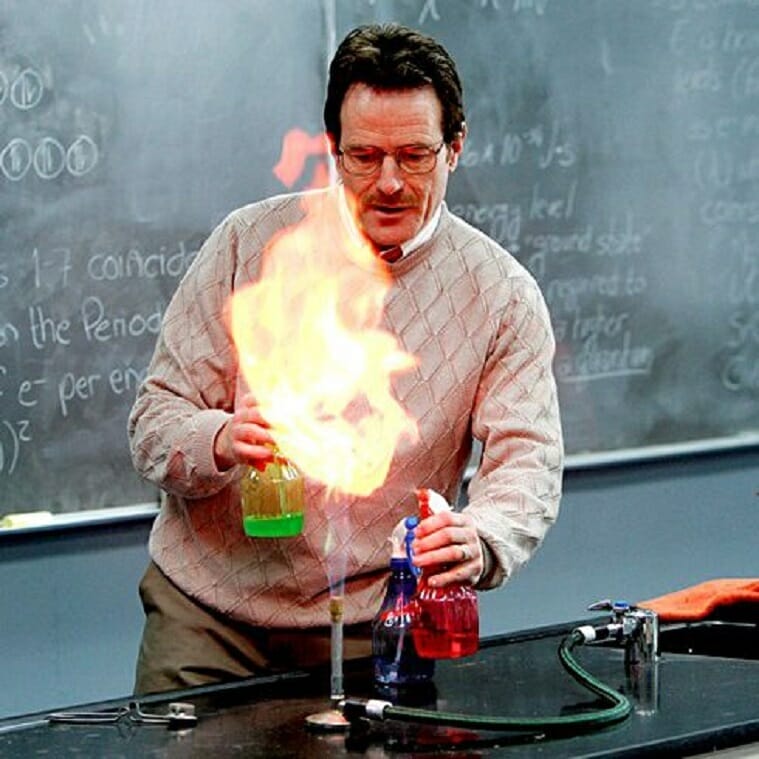There’s a lot of chemistry in blood. This includes its distinct color, smell, and its different types. We may be familiar with its chemical make-up. Blood contains haemoglobin—the protein which is found inred blood cells which lets our blood carry oxygen to our different cells. It carries some carbon dioxide back to the lungs as well in the form of carbaminohaemoglobin.

Source: Whicdn
The distinct red or maroonish color of blood is caused by the sub-units of the haemoglobin protein. Each of these four sub-units consists of a chain of proteins which is bound to a haem group. These haem groups contain bound iron atoms which creates the dark red color of the blood. The blood’s structure of alternating single and double bonds absorbs light of particular wavelengths which our eyes interpret as the color red. There other animals with different blood colors such as green, blue, or purple blood, which is caused by the use of different oxygen-carrying proteins.

Source: Makeagif
There is a wide misconception about the color of our deoxygenated blood or blood that flows back from our cells through our veins. Veins appear blue when we look at them through our skin, so many think our deoxygenated blood color is blue.
Oxygenated haemoglobin is a bright red, while deoxygenated haemoglobin is a darker red color—not blue. It only appears blue when we look at our veins through our skin. The blue color is due to the interaction of light with our blood and the skin that is covering the blood vessels. Red light is able to penetrate more deeply into our tissues than that of blue light, and since deoxygenated blood absorbs more red light than oxygenated blood, our veins get a blue color.
Have you ever tried biting your lip or your tongue by accident? I’m sure you’ve noticed that it has a certain metallic taste. This is because of the iron that is present in haemoglobin. It can also react with fat molecules to produce various compounds that help produce a metallic flavor.
Blood on its own, is metallic. Researchers have determined that there is a particular compound in blood which gives it a faint metallic smell. The compound is called, trans-4,5-epoxy-(E)-2-decenal. It is also an important compound that is detected by predators. Though all of our blood blood is colored by haemoglobin, and blood from various people will give out the same metallic smell, there will still be differences in blood from one person to another—you’ve guessed it, blood types.
There are many blood types, wherein 35 are recognized by the International Society of Blood Transfusion, but there are 2 classifications that many normally refer to. The first classification is the ABO system wherein a person can have type A, type B, Type AB or type O blood. This classification is based on the presence of antigens—structures that are found on the surface of red blood cells. They are either sugars or protein. The types of antigens present in a person’s blood determines their blood type.

Source: Bucksblokes
To put all these into a conclusion, the fake blood that is used for parties won’t have the properties we’ve talked about. The red color comes from food coloring that’s been mixed with sugar syrup. But isn’t it awesome to read a bit of trivia every now and then?











